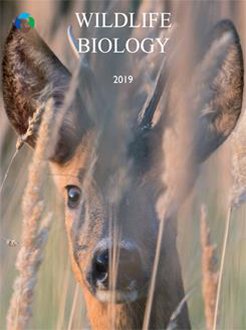In the last decades, the European wild rabbit, particularly the Oryctolagus cuniculus algirus, a keystone species in the Iberian Peninsula ecosystems, declined severely, raising concerns from the wildlife authorities. The hunting calendar in Portugal limits sampling collection to a narrow window of few months annually. Nevertheless, governmental wildlife protection laws allow live rabbit sampling for population and sanitary evaluations. The aim of this study is to adjust blood collection protocols from the external jugular vein (EJV) described for domestic rabbits to the wild rabbit. Collection of peripheral blood is problematic in the wild rabbit given its small body size and the reduced calibre of vessels but mostly its nervous disposition and fragility. We describe in detail a procedure for EJV blood collection in 30 wild rabbits after sedation with midazolam. Emphasis is given to protocol adjustments for wild rabbit. Heart rate, respiratory rate and body temperature were assessed before sedation, after sedation but before collection and after blood collection. Sedation onset took on mean (SD) 8 ± 2 min. The technique allowed the collection at least 1 ml of blood, a satisfactory volume for routine laboratory testing. The differences observed in heart and respiratory rates before and after blood collection were not statistically significant, indicating that no cardiorespiratory interference occurred due to venepuncture. Recovery from sedation took on mean (SD) 17 ± 2 min. All animals were set free during the first hour after blood collection. This work aims to demonstrate that blood collection under sedation is a safe and feasible procedure in wild rabbits when practiced by experienced veterinarians. At no time, whatsoever, was the physiological homeostasis at risk and no injuries were inflicted on the animals. To our knowledge this report constitutes the first guided description of blood collection from the EJV in sedated O. c. algirus and the first collection of physiological parameters measured under different conditions.
How to translate text using browser tools
5 December 2019
Blood collection from the external jugular vein of Oryctolagus cuniculus algirus sedated with midazolam: live sampling of a subspecies at risk
Fabio A. Abade dos Santos,
Carina L. Carvalho,
M. Conceição Peleteiro,
Sofia Isabel Gabriel,
Rui Patrício,
João Carvalho,
Mónica V. Cunha,
Margarida D. Duarte

Wildlife Biology
Vol. 2019 • No. 1
2019
Vol. 2019 • No. 1
2019
blood collection
external jugular vein
Oryctolagus cuniculus
sampling live animals
sanitary surveillance
venepuncture
wild rabbit





